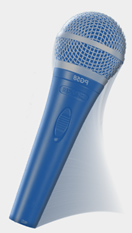Early research and facilities
In our early research on auditory organization, regular sequences of pure tones were used.
Anhalt's Electronic Music Facilities
Istvan Anhalt, one of McGill's rising electronic music composers, had recently established the McGill electronic music studio, situated in a stone coach house at 3500 Redpath Street.
Because Stockhausen was one of the strongest influences on the New Music of that era, Anhalt's studio was equipped with:I tried out some of these devices and found that while they were accurate enough for music, I felt that a greater accuracy was needed for scientific research. So I abandoned Anhalt's lab and found that I could do better by splicing tape manually into short loops that I could play on a tape recorder.
- a multi-track tape recorder,
- a variable-speed tape recorder,
- a filter, a mixer, and an oscillator bank,
- an electro-mechanical multi-track sequence recorder,
- other gizmos, many of them custom-built by Hugh Le Caine of the National Research Council in Ottawa, who had built the world's first electronic music synthesizer.
Development of computer facility
After begging for time and assistance in minicomputers in McGill's Department of Electrical and Electronic Engineering, and at the Montreal Neurological Institute, I finally was able to procure a minicomputer for the Department of Psychology. The Natural Sciences and Engineering Research Council of Canada funded the purchase of a PDP-11 system, and, fortunately, the hiring of a Laboratory Manager/Programmer to run it.
Software for analysis and synthesis of sound
Our laboratory software, rather than consisting of specific programs, was based on two systems specialized for auditory signals. One, called MITSYN, developed by William Henke at MIT, permitted the easy creation of signal processing algorithms for analysis and synthesis of sounds using graphic user interfaces (GUIs). One such GUI consisted of a block-diagram-oriented representation of a signal-processing algorithm. Other GUIs were editors for waves (including spectral and spectrographic displays), vectors, and scores (schedules for arbitrary parameter changes over time, such as intensities, note values, formant bandwidths or any property whatever). There was also a MITSYN script language that was like any general-purpose high-level language except that it had special concepts applicable to signal file processing.
The MITSYN program allowed us to use increasingly more complex patterns of sound. These included sequences and mixtures of complex tones, tonal glides, synthesized speech sounds, sine-wave-analog speech, filtered noise bursts, spatially separated sounds, irregular tonal patterns, and complex tones modulated in frequency and amplitude.
Software for the Control of Experiments
Our second main program ran experiments. It was a high-level programming language for the PDP-11, built on top of the ASYST software system, specified by me and developed by André Achim. This general purpose language, allowed the control of all kinds of auditory experiments. Almost all our experiments presented the sound via headphones, rather than loudspeakers, allowing a more precise control of what the listener heard.
Microcomputers
With the development of microcomputers, which were much more cost effective than minicomputers, Pierre Ahad, by then our laboratory manager, switched us over to the use of these devices. We had one per test chamber (three Industrial Acoustics rooms). Although we used early versions of microcomputers, they were still fast enough that we could send out audio signals without the use of specialized digital signal processors (DSPs). We continued to use MITSYN, in a version developed for the PC platform, to generate the signals. Pierre Ahad developed a new language for the PC, called Multimedia Control Functions (MCF), a successor for ASYST. MCF allowed for the control of arbitrarily complex experiments.


